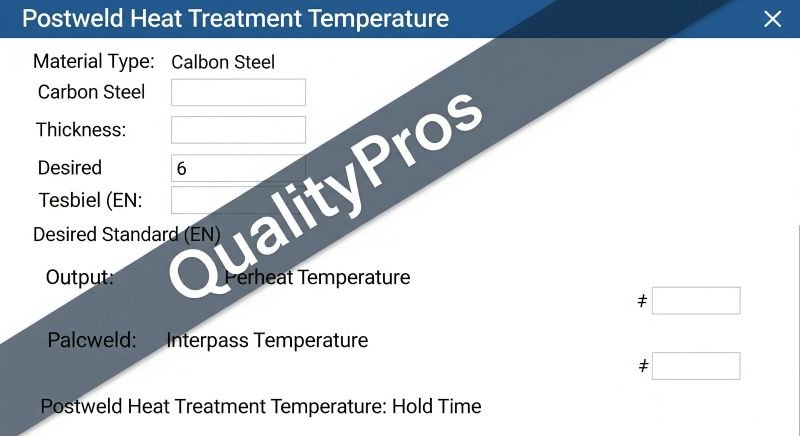Postweld Heat Treatment Temperature Calculator
In the world of welding, ensuring the integrity and longevity of welded joints is critical—especially in high-stress or high-temperature environments. One of the most effective ways to achieve this is through Postweld Heat Treatment (PWHT). But determining the correct PWHT temperature isn’t always straightforward. That’s where a PWHT Temperature Calculator becomes an essential tool for engineers, inspectors, and fabricators.
PWHT Temperature Calculator
🔍 What is Postweld Heat Treatment?
PWHT is a controlled heating and cooling process applied to welded components after welding. Its primary goals are:
- Reducing residual stresses caused by welding
- Improving toughness and ductility
- Preventing brittle fracture
- Tempering hardened microstructures
- Meeting code and specification requirements (e.g., ASME, API, EN)
PWHT is especially important for materials like carbon steel, alloy steel, and stainless steel used in pressure vessels, pipelines, and structural components.
📐 Why Use a PWHT Temperature Calculator?
Manually calculating PWHT parameters can be time-consuming and error-prone. A PWHT Temperature Calculator simplifies this by:
- Automatically determining the minimum and maximum PWHT temperatures based on material grade and thickness
- Suggesting holding time based on wall thickness and code requirements
⚙️ How It Works
The calculator then outputs:
- Recommended PWHT temperature range
- Soak time (based on thickness)
- Heating and cooling rates
- Notes on preheat requirements if applicable
💡 Cost-Saving Tips
Using a PWHT calculator not only improves safety and compliance but also helps reduce costs:
- Avoid Overheating
Excessive temperatures can degrade material properties and increase energy costs. Calculators help you stay within safe limits. - Optimize Soak Time
Holding longer than necessary wastes time and fuel. Accurate soak time saves both. - Prevent Rework
Incorrect PWHT can lead to cracking or failure, requiring costly repairs. Calculators reduce human error. - Streamline Planning
Accurate estimates help schedule furnace time and reduce downtime.
🧰 Who Should Use It?
- Welding Engineers – for procedure qualification and WPS development
- QA/QC Inspectors – to verify compliance during fabrication
- Project Managers – for planning and cost estimation
- Fabricators – to ensure proper execution of PWHT cycles
